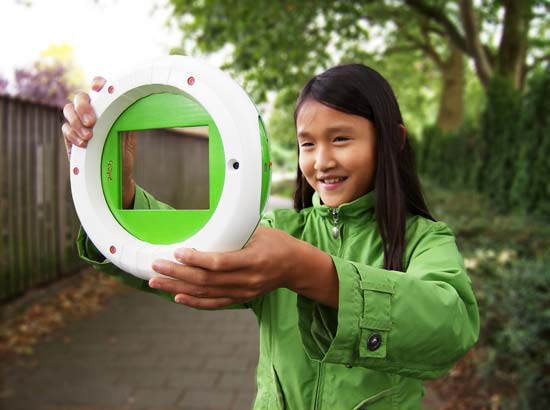 Inspired by James Nachtwey’s TED Prize wish, designer Bas Groenendaal shares this prototype camera with TED. The Scope camera has a fresh look and a singular purpose, he says:
Inspired by James Nachtwey’s TED Prize wish, designer Bas Groenendaal shares this prototype camera with TED. The Scope camera has a fresh look and a singular purpose, he says:
to be used as a therapeutic instrument for underprivileged children, e.g. children living in (former) warzones. Children can take photographs and self-portraits in order to rediscover their environment and identity, and share their point of view with others.
With its open-steering-wheel design (you click the shutter by squeezing the sides), Scope invites a new perspective on picture-taking, removing the distance between the photographer and her subject. As Groenendaal writes,
I wanted to emphasize the importance of looking and framing. In my design there is no screen … It places the photographer in the spotlight: while looking through the camera, the world looks at you. You cannot hide behind the camera.
Groenendaal took the Scope prototype to an asylum-seekers center in the Netherlands, where the kids quickly figured it out: “A funny observation was that the children used Scope to frame their own heads: hold the camera really close to their face and — while talking — look at everybody around them. The children seemed very conscious of themselves, their position, what they were seeing.” It’s an illustration of the power of photography to frame a very personal story. When Groenendaal watched James Nachtwey’s TED Prize wish, he felt a deep resonance:
I was triggered in particular by the question posed as part of the wish: “What are creative ways to make the biggest impact in a way that others could use in future?” I believe that photography from within, made by the people/children themselves, can make a powerful impact on not only the outside world, but also on the people themselves.
Visit Bas Groenendaal’s website >>

Having trouble leaving a comment? (We’re working on it…) Email it to us: blog at ted dot com